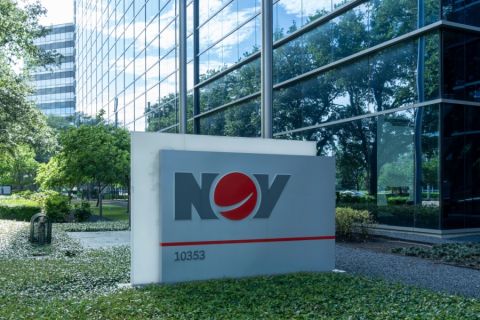The more things change, the more they stay the same.
Half a century after U.S. support for Israel during the Yom Kippur War prompted Saudi Arabia to lead Arab members of the OPEC cartel in imposing a debilitating oil embargo on the West, another October assault on Israel and Saudi support for its aggressors may put oil markets in the balance.
Granted, things have changed significantly in the last 50 years. But a tenuous relationship between the West’s oil consumers and the Middle East’s producers remains.
The impact of the embargo 50 years ago created an immediate impact in the U.S., where gasoline supply dwindled, prices spiked and scenes of gas stations where cars lined up for blocks remain engrained in the nation's collective memory.
“The Saudis were so enraged at the American support and so imposed an embargo on exports to the U.S.,” said Robert Jordan, the U.S. ambassador to Saudi Arabia under President George W. Bush, during a recent chat. “They were using oil as a weapon.”
Rough trade
The relationship between the U.S. and Saudi—the de facto leader of OPEC—has seen its ups and downs during the subsequent 50 years.
During the 1980s, the two nations worked closely to expel the Soviets from Afghanistan. But throughout the aughts, the alliance has been fraught.
During the Second Intifada, an uprising in the Palestinian territories against Israel, the U.S. position on Israel again created friction. Jordan said Saudi’s Crown Prince Abdullah bin Aziz al-Saud advised Bush in a letter that if the U.S. refused to pressure Israel to moderate or solve the conflict with the Palestinians, the Saudis would “reconsider their relationship with the U.S. and consider using oil as a weapon.”
But the kingdom’s enmity faded with the Al Qaeda’s terrorist attacks on the U.S. on Sept. 11, 2001. The prince branded the U.S. a close friend of the kingdom and condemned the attack as a “deviant” plot to wreck the relationship.
Louder than bombs
But Jordan said that since the invasion of Iraq in 2003, the Saudis have found the U.S. to be an inconsistent ally. President Barack Obama’s pivot to Asia didn’t help matters.
“They feel somewhat abandoned by us,” Jordan said. “So, they started charting a somewhat more independent course, both with regard to security matters and to oil.”
And then, there was the U.S. shale revolution and the creation of OPEC+, which includes Russia as a sort of Saudi business partner, despite the global condemnation of Vladimir Putin’s invasion of Ukraine and upending of Europe’s energy markets.
Underscoring the tenuous relationship between the U.S. and Saudi is the reaction by the crown following President Joe Biden’s visit to Riyadh, where he first lectured the leadership on human rights and then asked for an increase in oil production. Saudi instead reduced it temporarily.
How soon is now?
As in 1973, the U.S. is providing some backup to Israel in the wake of an October terrorist attack; Israel has met the violence within its border with deadly force in Gaza, the narrow strip that separates part of Israel from the Mediterranean Sea.
Saudi supports Palestinian rule of Gaza. But in 2023, the kingdom isn’t making market-shocking threats. Saudi leaders have called for a ceasefire, while also suggesting that Israel provoked the violence.
And this is where things get sticky for Saudi, the most likely source of cash to Gaza once the fighting ends, Jordan said.
Saudi Arabia runs its budget mostly on oil revenue—and that’s why things could get slippery for oil price forecasting.
Oil still funded about 40% of Saudi’s gross domestic product in 2022, according to the International Monetary Fund. Oil revenue has averaged about 75% of the kingdom’s total budget since 2010.
But the kingdom has its sights set on reducing its reliance on oil revenue. Its Vision 2030 program is based on the promise of the energy transition and, to fund new ventures, Saudi needs to encourage direct foreign investment, Jordan said.
“A lot of it would come from the U.S. and, so, I think they are walking a bit of a tightrope in trying to express their foreign policy views while at the same time not wanting to alienate the source of a lot of investment they need to achieve their goals,” he said.
Brent in the $80s is likely a sustainable price that gives the state-owned Aramco the maximum return for generating the cash they need now and the investment for diversifying, Jordan said.
The cost to rebuild Gaza is unlikely part of that equation, but Jordan and others say Saudi has too much at stake—as part of the broader global economy—to create an oil price spike on a whim.
But if they did, it wouldn’t be the first time.
Recommended Reading
Barnett & Beyond: Marathon, Oxy, Peers Testing Deeper Permian Zones
2024-04-29 - Marathon Oil, Occidental, Continental Resources and others are reaching under the Permian’s popular benches for new drilling locations. Analysts think there are areas of the basin where the Permian’s deeper zones can compete for capital.
Initiative Acquires Equity in Renewable Firm ArtIn Energy
2024-04-28 - Initiative Equity Partners is taking steps to accelerate deployment of renewable energy globally, including in North America.
Keeping it Simple: Antero Stays on Profitable Course in 1Q
2024-04-28 - Bucking trend, Antero Resources posted a slight increase in natural gas production as other companies curtailed production.
NOV Announces $1B Repurchase Program, Ups Dividend
2024-04-28 - NOV expects to increase its quarterly cash dividend on its common stock by 50% to $0.075 per share from $0.05 per share.
Repsol to Drop Marcellus Rig in June
2024-04-28 - Spain’s Repsol plans to drop its Marcellus Shale rig in June and reduce capex in the play due to the current U.S. gas price environment, CEO Josu Jon Imaz told analysts during a quarterly webcast.





